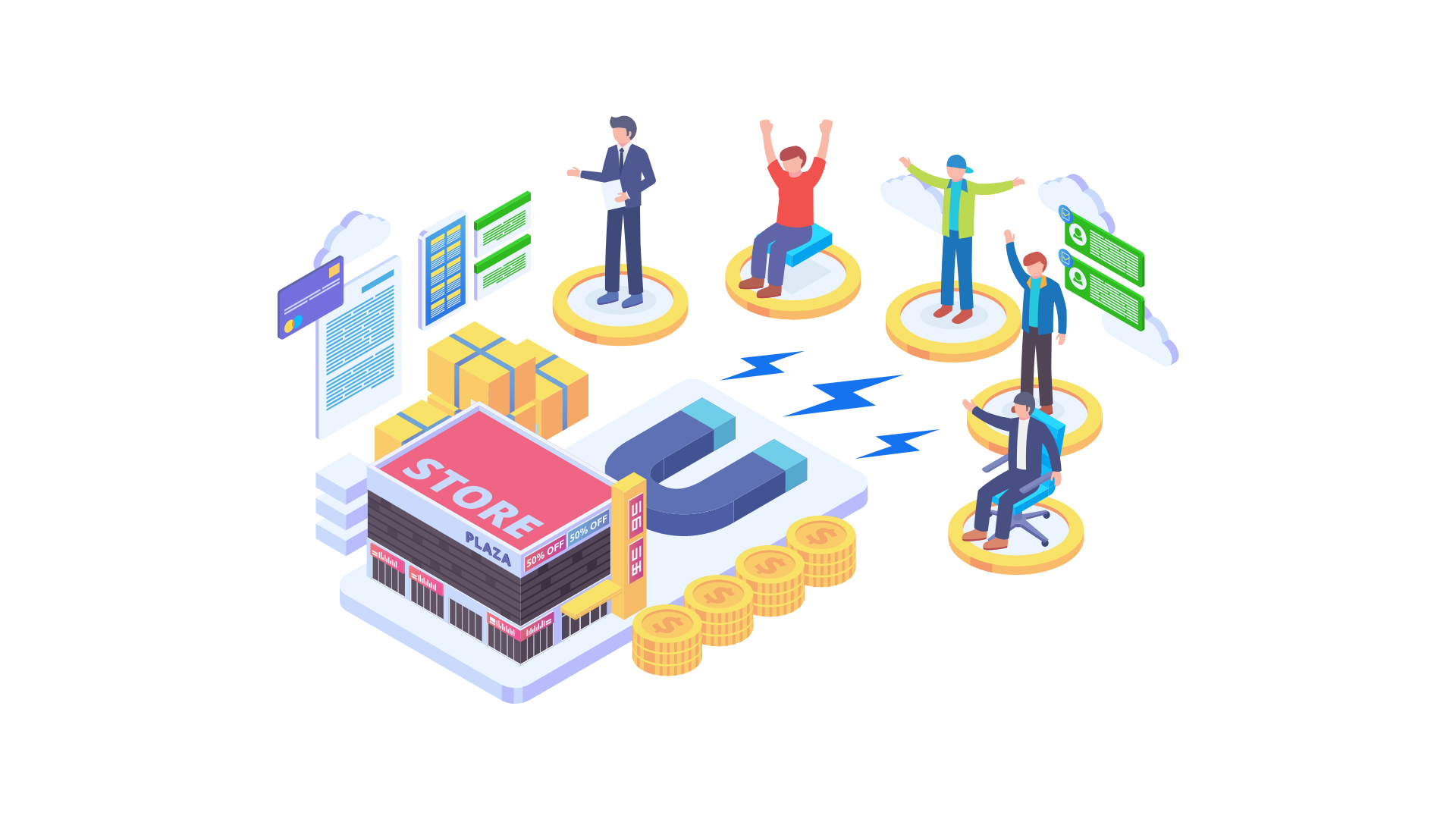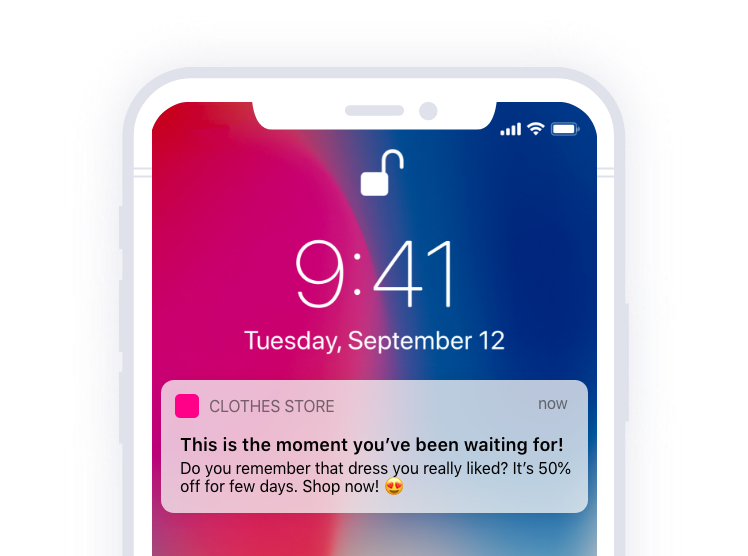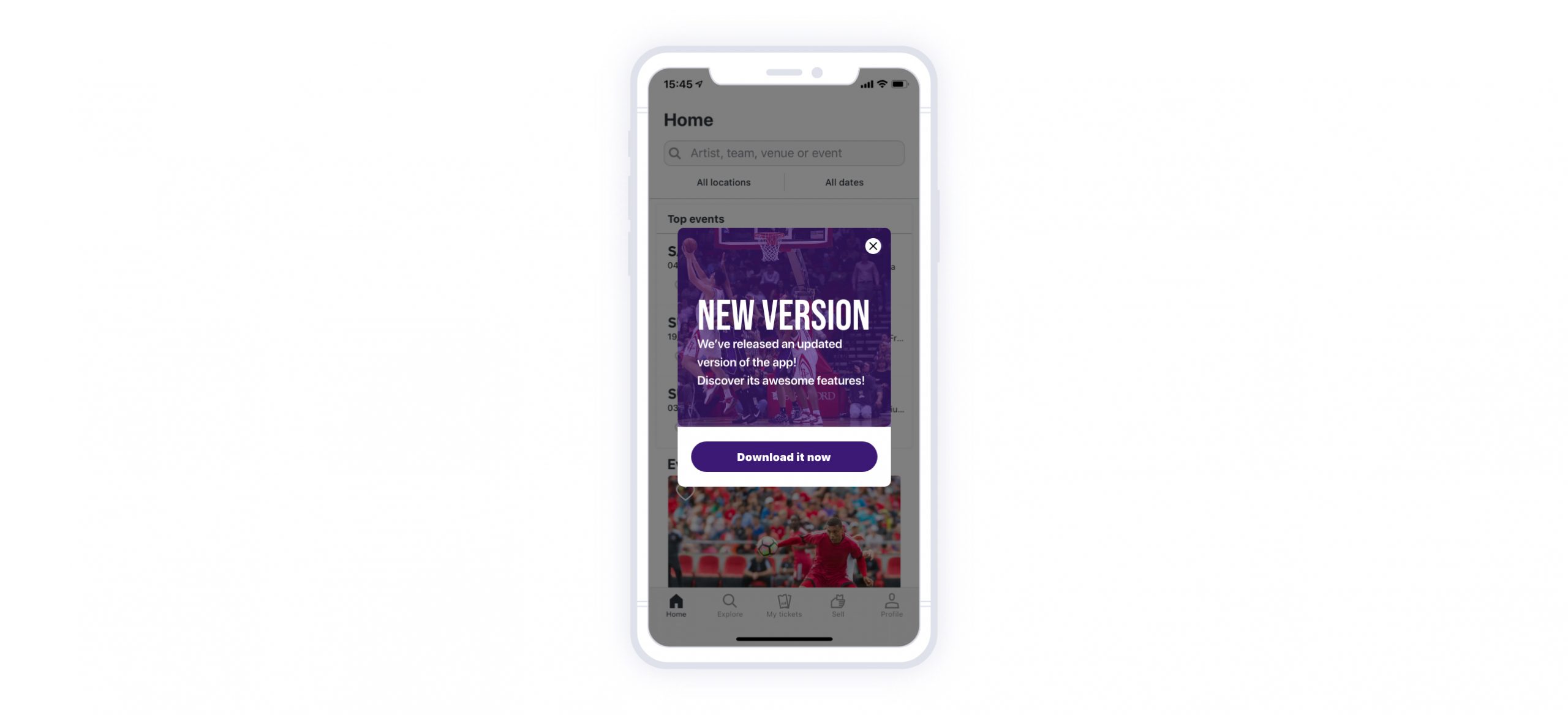Are you struggling to find out the right strategies to keep users coming back to your app? Let me guess how it went. You and your team have worked so hard and got to develop a great app. Maybe, you’ve also promoted it in the most famous communication channels and got hundreds of users. But after a while, many of them suddenly stopped using your amazing app. Am I right? Well, then, you need to focus on successful mobile app retention strategies to engage users and push them to use your app again and again. Don’t worry, we’re here to show you how to do that!
As you might have already noticed, in the mobile app market, competition is fierce. Data shows that only 40% of customers keep using a mobile app they’d downloaded the month before. You know what? Unfortunately, it gets worse and worse as time goes by. Indeed, after 6 months, only 10% of customers keep using an app, and after a year, only 4% of them do (Source: HubSpot).
Your goal is exactly to avoid this! And together, we’ll try to figure out how you could encourage users to keep using your app and increase your app retention rate.
Let’s start with the basics.
What’s app retention rate?
As the name suggests, the app retention rate represents the number of users who keep using your app a certain amount of time after they’ve downloaded it. Got it, right?
As for mobile apps, the number of users opening your app within 2 days after install plays a key role in your app’s future. In a recent survey by Statista, we’ve discovered that 25% of all the apps downloaded worldwide are opened only once. This means that apps’ churn rate is extremely high in the first 2 days after download.
You see? User retention rate is the key to your app’s success. And it’s even more important than acquiring new users. What are thousands of new users for if you can’t keep them in the long run? If you can’t earn any money?
Let’s find out why a great mobile app retention strategy is crucial!
User retention is the secret to business growth
A high app retention rate goes hand in hand with an app’s long life. That’s why I insist on the importance of user retention! If your app has a high user retention rate, it means that many users are loyal to your app and your brand. And that’s precisely what boosts your business success! Indeed, loyal users/customers trust your brand and are likely to frequently buy your products/services. They may also recommend and promote your app to their friends, leading you to potentially acquire new users.

Notwithstanding the importance of app retention rate, many companies keep exclusively focusing on user acquisition. They waste too much money on that, without even making any profit because of their poor mobile app retention strategy. User acquisition is, of course, the first important step in any marketing strategy. And you should implement effective strategies to promote your mobile app, like the ones we’ve described here. However, you better also adopt successful strategies to retain the users you’ve struggled to acquire. Remember that retaining existing customers is less expensive than acquiring new ones. So, focus on spurring them to keep using your app, rather than looking for new users! Plus, by increasing user retention by 10%, your revenue will increase by more than 30% (Source: Bain & Company Study).
Let’s discover 7 successful mobile app retention strategies!
1. Adopt a successful onboarding strategy
Users’ first impression of your app is terribly important for its success. So, make sure to provide users with an awesome and engaging experience when they open your app for the first time. How to do that? Adopt an outstanding onboarding strategy, and teach users how they can make the most out of your app. Try to make it simple and enjoyable, like in the picture below.

Read our tips here if you don’t know what onboarding is.
There are actually 3 kinds of onboarding for mobile apps:
- Benefit-oriented onboarding enhances your app’s value from the users’ perspective. In this case, I suggest you display to users how they can take advantage from using your app in a few clear and straightforward steps.
- Function-oriented onboarding is particularly suitable for those apps including a really wide range of features.
- Progressive onboarding can be used for mobile apps characterized by complex features. In this case, you better create a step-by-step guide so that users can easily and rapidly learn how to make use of your app.
Remember that users get impatient easily, are always in a hurry, and don’t like wasting time learning complex app functions. That’s why you should create a simple and nice onboarding flow. Plus, set up fast mobile app navigation that only takes a few steps. Make sure it’s easy to create an account and log-in to your app. And avoid bombarding users with useless information.
In a nutshell, your onboarding flow should convince users that they’ve made the right choice downloading your app. Make them think: “that’s what I really needed!”
2. Customize the user experience
By customizing your app’s user experience, users will be more engaged with your app, and you’ll manage to increase user retention. Personalizing the user experience is also a strategy to increase the number of loyal users. Bear in mind that loyal users are really profitable!
In order to provide a customized UX, you need to collect lots of data on user behavior, interests, and actions. Then, you can exploit all this useful information to reach users with personalized content and messages, like push notifications and in-app messages.

Users like receiving personalized content! However, make sure to send the right content at the right time to the right user, as we’ve explained here. You should take into account the users’ specific life cycle stage in order to reach them with a suitable message. If you don’t know what I’m talking about, this article about user life cycle marketing may be useful.
Oh, one last tip: avoid exploiting too private user details for your customization strategy. Just stick to the information your users will allow you to track. This way, they won’t feel betrayed and will be likely to trust you more.
3. Grab users’ attention with push notifications
Push notifications are a really effective strategy when it comes to leading users to come back to your app to take the action you’ve suggested to them. For example, you could send a push notification to remind users they didn’t complete their purchase. You could prompt them to buy the products in their cart by granting them a discount valid for a limited time period.
Push notifications are even more powerful when combined with rich media, like images, GIFs, and videos. These elements contribute to engaging users even more. Try also to add a call-to-action (CTA) to your push notification to achieve your goal. A CTA is often a small sentence that clearly tells users what to do. This way, it’ll be more likely that they’ll do what you suggest them to. Have a look at the following image to get inspired!

Try to follow the tips below to create outstanding push notifications and enhance user retention:
- Spur users to opt in to receive your push notifications.
- Send your push notifications at the right time. Keep in mind that most of your users live in different parts of the world and, so, are in different time zones. Plus, your push notification should be triggered by a specific action taken (or not) by the user.
- Personalize your push notifications‘ messages according to users’ needs, interests, and actions. The worst thing you could do is sending non-sense and general push notifications. They may annoy users and lead them to uninstall your app.
- Don’t overload users with tons of push notifications, or they’ll get frustrated. You should find the right balance.
- Exploit push notifications to strengthen users’ trust. For example, you could inform them when someone logs in with their account through a new device.
4. Engage users with in-app messages
In-app messages are another successful communication tool that prompts users to perform specific actions inside your app. These messages can also increase user retention by engaging users with customized content. In particular, in-app messages are useful to:
- advertize your app updates and new features;
- invite users to give you feedback and share contents on social media;
- teach users how to use your app, introducing its core features and sections through onboarding in-app messages;
- lead users to visit specific sections in your app, like their cart, for example;
- promote your app value;
- boost brand awareness.
Read this article about in-app messages’ best practices to make the most out of this strategy!
5. Implement gamification to enhance user engagement
Gamification is a strategy based on implementing game dynamics typical of mobile games into other kinds of apps to prompt users to come back to an app. By adopting fun game features and dynamics, users will be more engaged with your app, and user retention will increase.
Gamification can be focused on leading users to compete with others or achieve their own goals. Either way, game features trigger a sense of achievement and encourage users to keep using your app. To gamify your app, you just need to add some game dynamics, like rewards, collecting points, quizzes, virtual goods, and progress bars. Choose some of these elements, and provide an outstanding experience for your users! This way, they’ll have fun using your app, be more engaged with it, and keep coming back. They’ll also be likely to spread the word about your app with their friends, leading to an increase in your app’s user acquisition rate.
6. Reward your loyal users
As we’ve already stressed in this article, focusing on user retention is more profitable than wasting all your budget on new users’ acquisition. You need to nurture your users and do your best to retain them. So, make sure to keep providing value to your loyal users. How to do that? There are various strategies you could adopt. For example, you could offer time-limited discounts to your loyal customers, based on the number of their purchases. Alternatively, you could entice them to join your VIP program to get exclusive discounts.
Remember that loyal customers have another great potential: they can promote your app and products to their friends. Ask them to rate your app and reward them for it, as in the example below.

This way, your loyal users will be further engaged with your app, and you’ll be more likely to acquire new users. AWESOME!
7. Update your app’s features
Constantly adding new features to your app, streamlining its functions, and updating its content is key to keep engaging your users and encourage them to come back. Make sure to pay attention to your users’ feedback, reviews, interests, and behavior when deciding how to update your app. Indeed, you have to improve it to provide them with an enhanced user experience. You could also get inspired by your competitors’ new updates. I also suggest you promote your app’s new features to prompt users to launch your app and try them. Tell them with an in-app message!

Wrap-up
In a nutshell, a great mobile app retention strategy revolves around customization, ongoing engagement, and high value provided to users. Users pay a lot of attention to their needs, interests, and pain points, which you should try to solve. Users also want a personalized and enhanced experience when using your app. That’s why you should do all you can to send them customized content and messages, encouraging them to come back with special offers and rewards. These strategies are necessary if you want to increase user retention rate.
Track users’ purchase history, actions, feedbacks, and search history to implement successful and tailored mobile app retention strategies. You’ll achieve great results, believe me!
Oh, and don’t forget the 7 top mobile app retention strategies to improve user retention rate:
- Adopt a successful onboarding strategy.
- Customize user experience.
- Grab users’ attention with push notifications.
- Engage users with in-app messages.
- Implement gamification to enhance user engagement.
- Reward your loyal users.
- Update your app’s features.
What’s next?
- Wanna streamline your mobile marketing strategy for user retention? Discover why users tend to uninstall mobile apps here and what to do to avoid it!
- Thanks to the new MBurger Engagement Platform, you’ll easily reach users with amazing push notifications and in-app messages. Ready to boost user retention rate?